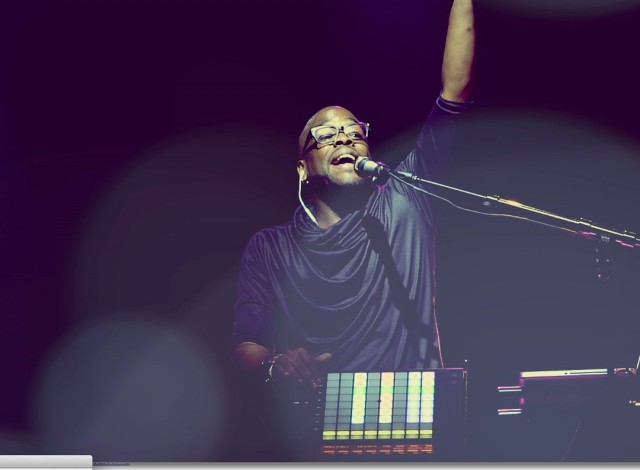If the computer can do one thing, it is to vastly expand what a single musician can do live. Whether you rise to that challenge has everything to do with who you are as an individual musician. It’s about the person as much as the machine.
Thomas Piper, Jr. is at his absolute best in a soulful, no-holds-barred, energetic performance New York’s famed Webster Hall. (His son Zion, by the way, is also terrifically talented.) Here, his vocal is front and center far more than the computer, but the digital instrument also supports what he’s doing.
At the Kompakt pop-up recently, I was keenly interested to talk to Blue Hawaii about how they meld live electronics with vocals. We were footsteps from where Ableton Live is developed, but even that tool to me is a means to an end: the fundamental question was how they approach the vocals.
We’ll have the results of that conversation here on CDM soon, but it’s safe to say that Thomas Piper and Blue Hawaii represent different ends of the spectrum of how you might approach this. And that’s little surprise; the dynamic of a duo is very different than a soloist.
Blue Hawaii lets their singer control her own looping and effects separately, while her partner does arrangement. And since he’s only doing arrangement, he mixes, remixes, slices, and adds beats live. Thomas’ approach is more minimal, allowing him to keep his focus on singing – and, crucially, the audience. Live is essentially a machine for backing tracks; you’ll note how neatly-organized his scenes are, and how he keeps triggering simple.
But here’s where Push shines as a controller: you’re always one push-button away from switching between triggering scenes and controlling melodies.I expect that ease in switching modes is something people may emulate on other control layouts, too, once they’ve seen Push.
Thomas is also using Push in the studio; he’s uploaded a video in which he shows how he finishes the work. That’s interesting, too, as Ableton from their very first pitch for Push emphasized starting tracks with the controller. The implication was that you’d turn to the mouse to wrap things up, but it’s nice to see this in contrast.
In a video, he explains how he works with the hardware.
THOMAS PIPER INTERVIEW About Ableton PUSH from Thomas Piper on Vimeo.
And you can’t help but notice the Apple laptop there. This contrasts with the “post-PC” argument now being made about the mainstream market. Whatever is happening to the industry at large, the laptop is still ubiquitous onstage. (And notably, that’s often an Apple laptop.) What’s happened to the laptop in music is a strong case of “laptop and…” The laptop itself fades into the background in the way a mic stand might – and it’s just as essential as equipment. For comparison, see:
The Laptop Revival Is Here. The Laptop Is Dying. [Gizmodo]
That article concedes that specialist audiences will remain just as interested in laptops as always. And that seems to include musicians in a big way.
Back to Thomas Piper, here’s a preview of his record:
And you can buy his trap-themed drum pack, as used here, for ten bucks on his site:
Thomas Piper Store
